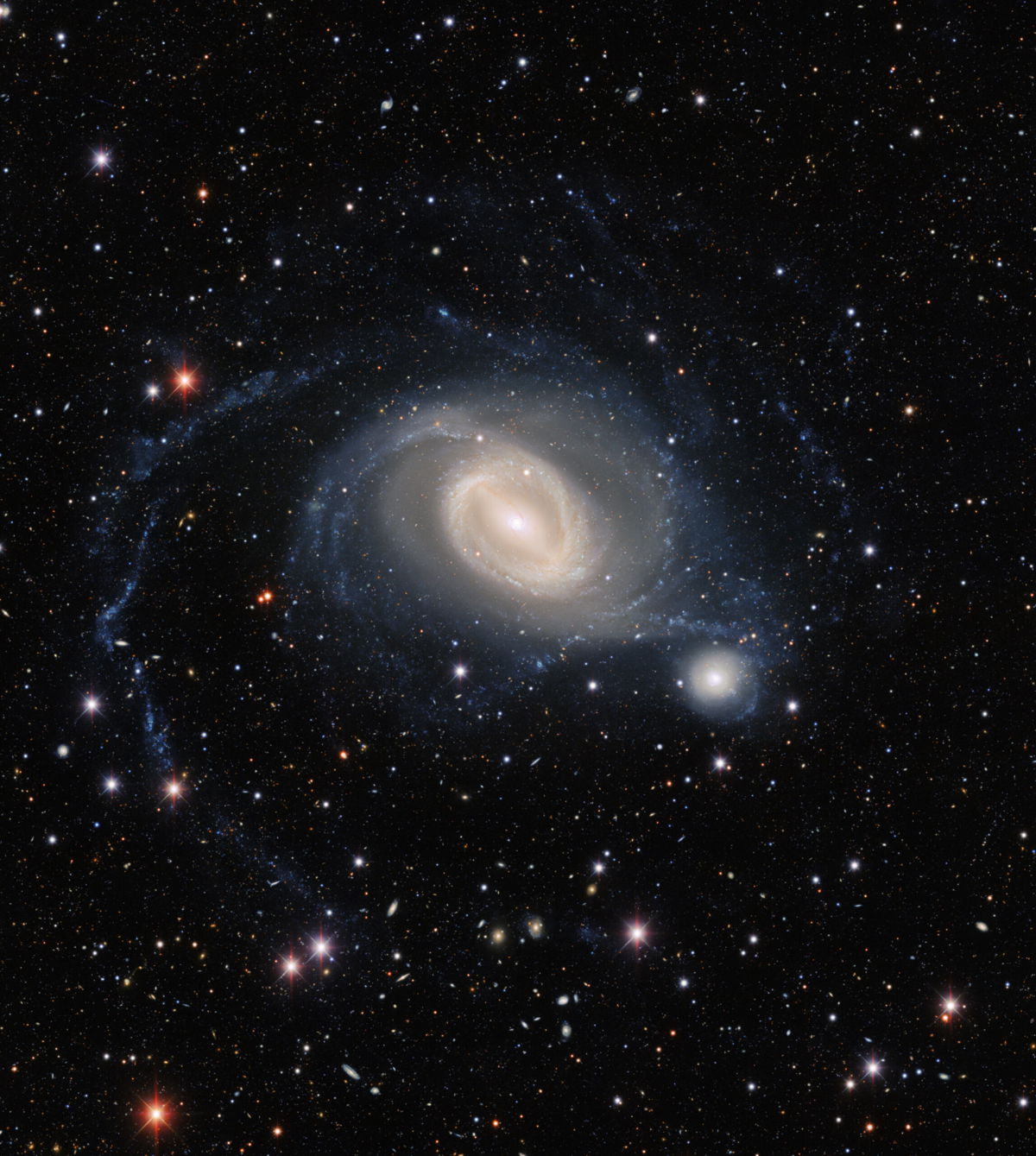Stunning ‘galactic ballet’ captured in new telescope image

A stunning 'galactic ballet' was captured in new telescope image. Galaxies NGC 1512 (left) and NGC 1510 swirl together in a dance that will eventually bring them together in this new image from the Dark Energy Camera.
By Ashley Strickland, CNN
Think of this as one very long last dance.
Two galaxies located 60 million light-years from Earth have been in the process of coming together for 400 million years.
The galaxies, NGC 1512 and NGC 1510, are located in the Horologium constellation, as seen from the Southern Hemisphere.
The larger of the two, NGC 1512, has been merging with its smaller galactic companion for so long that it has created waves of star formation.
This phenomenon can now be seen in a new image, released on Tuesday, that was captured by the Dark Energy Camera.
The US Department of Energy-funded camera is a wide-field imager located on the Víctor M. Blanco 4-meter Telescope at Cerro Tololo Inter-American Observatory in Chile. The observatory is a program belonging to the National Science Foundation’s NOIRLab.
The new image shows NGC 1512, a barred spiral galaxy, appearing to reach out with tendrils to embrace the smaller NGC 1510 in a type of “galactic ballet,” according to the researchers.
The stream of light between the two galaxies reveals just how long these two have been interacting. The gravitational forces from both galaxies has accelerated the rate of star formation in each galaxy and distorted their shapes.
Eventually, the two galaxies will merge into one larger galaxy, which is how they evolve.
Capturing the evolution of galaxies
The Dark Energy Camera collects starlight as it is reflected by the Victor M. Blanco’s 13-foot-wide (4-meter-wide) mirror that weighs about as much as a semi truck.
The starlight passes through the inside of the imager, including an initial optical corrector lens 3.3 feet (about 1 meter) across, to a grid of 62 charge-coupled devices.
These sensors are much more attuned than the sensors in your average digital camera, so they are perfect for capturing light from faint astronomical objects like these galaxies.
The Dark Energy Camera, created for the six-year Dark Energy Survey, helped more than 400 scientists from around the world to map hundreds of millions of galaxies, track down supernovae and even determine patterns of cosmic structure in the universe.
The survey, carried out between 2013 and 2019, is helping scientists to understand how mysterious dark energy is contributing to the expansion of the universe.
And luckily for us, the camera is still being used for other observing programs and continues to capture awe-inspiring cosmic views.
The-CNN-Wire
™ & © 2022 Cable News Network, Inc., a WarnerMedia Company. All rights reserved.